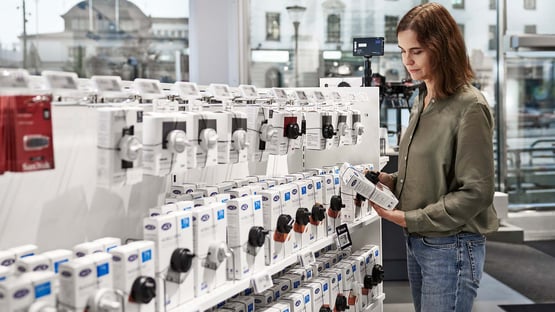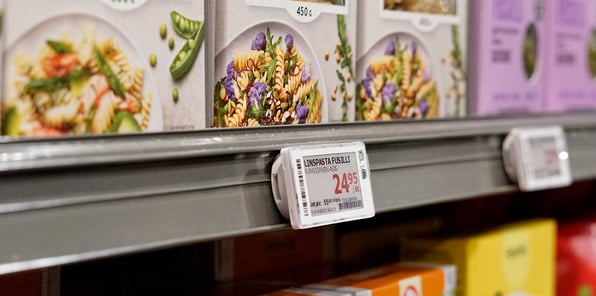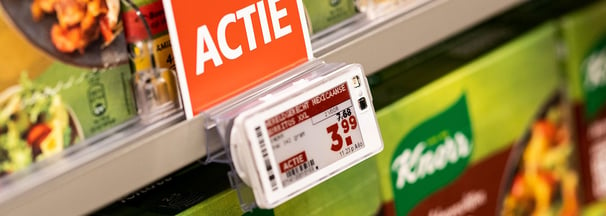Retail Europe Shopper Outlook

During 2021 Pricer conducted an analysis of shopping behaviour among consumers in key European economies during and post-pandemic, and recommended actions for retailers and their suppliers. At the bottom of this page, you can download all the different reports.
Why we did this
As a provider of digital solutions in store, we wanted to support retailers with new consumer insights that will assist them to make the changes they need to protect their profitability.
Understanding consumers is more important than ever
Already unpredictable consumer behaviours are now even harder to read as a result of the way they acted during the pandemic and the extent to which some of these changes are becoming habitual.
The greatest of these is the shift to e-commerce which in some countries has risen from 5% to 30%, and as a result, the store is now playing two distinct roles – serving customers in store and serving them at home, office or pick up point.
In addition, the various trends that were emerging before the pandemic have moved to a critical stage, most notably consumer demands for greater visibility into labelling, packaging, ingredients, health information, sourcing, sustainability, choice, pricing and fulfilment.
The bottom line is this all added cost and because retailers did their very best to serve their customers during the difficult days of the pandemic, this simply added even greater cost. Now, the focus must be on people, process and profitability, enabled by advanced technology at the shelf edge.
What do consumers think?
Research was commissioned by Pricer in early 2021 among 18,000 people in Norway, Sweden, Denmark, Finland, Italy, Spain, France, Germany, Netherlands and UK in June 2021.
Topline findings
While figures varied dramatically across countries for some questions, it is fair to generalise about European customers’ desire for more information about their intended purchases in store and greater transparency across channels. Some of these preferences have been a factor in retail for some years now, but the pandemic has caused some of them to spike.
Across all markets, 64% of consumers said they wanted more access to product information, rather than just pricing, at the shelf edge.
A thirst for information
Consumers want more information at the shelf edge about the products they are buying, notably on labelling, packaging, ingredients, health information, sourcing, sustainability, choice, pricing and fulfilment.
A lack of this information is causing many to abandon their intended purchase, or make decisions that are different from the ones they took before the pandemic.
Across all markets, 64% of consumers said they wanted more access to product information, rather than just pricing, at the shelf edge, with the strongest demand being driven by Spanish and Italian shoppers. And they were more likely to buy a product when they could easily and clearly see information about that product displayed.

Changing behaviour
There was plenty of evidence that pandemic behaviours had become habitual.
Since the pandemic, a third of consumers had been using home delivery services far more frequently, and would now continue to do so, including click & collect, often to avoid paying delivery charges.
The new shelf – read, react, predict
The growing number and type of store journeys mean that shopping baskets will be less predictable, which demands more agile assortment, allocation, replenishment and picking strategies.
The result of all these dynamics is the store shelf has to perform many different roles around predicting and fulfilling complex demand:
And the shelf has to be able to react quickly and continuously to events triggered by customers, store staff, merchandisers, suppliers and the wider market, particularly during the upheavals of the last year which make writing the future very difficult.
And, of course, it has to perform these tasks not just efficiently but affordably. Despite the rise in demand for online, profitability for some low-margin retailers is still elusive because some fulfilment options can be expensive even with delivery costs factored in. Any technology has to demonstrate that it can deliver significant savings in labour costs, a sales uplift or margin improvement.
Established use cases for electronic shelf labels and technology
These various and often conflicting market dynamics can be met using tried and tested technologies that deliver value in their own right and then significant added value through integration with advanced add-ons and partner solutions.
Automation also addresses a problem for all retailers, even in low-cost economies, the cost of labour and of compliance with workplace regulation. Even as minimum and living wages rise, valued staff increase their value by being equipped with technology that enables them to perform tasks more quickly, accurately and with a greater focus on customer service both in store and for online orders.
Each of these scenarios is based on live trials in large chain grocery outlets.

Automated price changes cuts cost dramatically
The value of electronic shelf labels is principally to do with the time saved not having to print and replace price tags. Based on 500 price changes per week and two minutes to change each price tag (including printing, sorting and finding the right product) at an hourly cost of €20 that total more than EUR17,000 a year saved.
In addition, because prices can be changed instantly, in real-time, they are always in step with the competition, whatever strategy they deploy, which is the best way to protect margins. Moreover, universal price management also guarantees price synchronization across both on- and off-line channels, which meets customer expectations around consistency, and avoids the risk of fines for inconsistency.
Picking for online orders
In the context of low or no profitability for home delivery, electronic labels equipped with flash to indicate location of each and every item, cuts the time to pick each item by between five and ten seconds. Based on 100 orders of 30 items per order paying staff €20 per hour seven days a week, averaging each pick at seven seconds equates to a saving of more than €42,500 per annum.
Replenishment and efficient in-store supply chain
By using labels with flash and location mapping, finding the right place more easily, the time saved on each SKU replenished is between three and six seconds.
At a sell-through rate of 20,000 items per day in batches of 10 items, time saved is four seconds. At €20 hourly cost this adds up to a saving of more than €16,000 per annum.
Further time is saved because the problem of putting items in the wrong place is eradicated.
The solution delivers additional benefits by being applied for efficient preparation of pallets to determine shortest path in store and packing goods in the right order for shelf stacking.

Waste management
Both time and food waste can be reduced by automating the checking of item dates. Time saved is typically 50% and waste is reduced typically by 20-40%.
Depending on current processes and waste level in the business, this equates to €8 000 - 15 000 per year.
By adding dynamic pricing based on date, waste is reduced even further because each item is offered for sale at the price most likely to move it.
Both time and food waste can be reduced by automating the checking of item dates. Time saved is typically 50% and waste is reduced typically by 20-40%.
Promotions
Trying to manage slow-moving stock is a significant drain on resources whereas flash on shelf talkers can draw immediate attention to a promotion without any manual intervention. In trials, the time saved is around 50%.
Value is dependent on the extent of shelf talker usage in the store but based on 5% promotional shelf talkers per week across 12,000 SKUs over a two promotional period cuts time by 10 seconds which is an annual saving of more than €3,500 per year based on a €20 hourly cost. Automation also cuts errors which can be costly.
This report is based on detailed research in stores that are part of major European retail chains.
If you would like to see the figures or have any questions regarding the reports, please email marketing@pricer.com.
Consumer Report (European) 2021
Download the European report
Consumer Report - Grocery (UK) 2021
Download the grocery report for UK
Consumer Report - General Retail (UK) 2021
Download the general retail report for UK
Consumer Report (France) 2021
Download the report for France
Consumer Report (Germany) 2021
Download the report for Germany